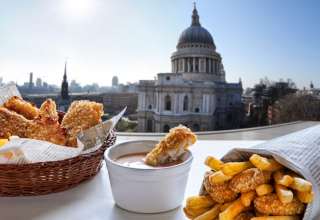It took a while but tequila is now definitely going global. A sure sign the Mexican spirit is taking off is the number of A-list celebrities (think George Clooney, Justin Timerblake and Carlos Santana to name but a few) that are hoping to cash in on the trend.
So what is tequila?
Tequila is actually part of the mezcal family. Any spirit that is distilled from the agave plant in Mexico is considered a mezcal, and beneath that there are specific types of mescals – one of which is tequila.
Tequila and mezcal can only be produced in certain regions in Mexico and because they each have separate denominations of origin they are considered two different spirits.
Confused? A good way to look at it is to consider all Cognac is brandy, but not all brandy can be called a Cognac because to be called a Cognac it has to be produced in Cognac, France. Clear as tequila right?
Tequila is by far the most widely produced spirit in Mexico. There are about 180 municipalities across five different states in Mexico that are allowed to produce tequila. Tequila is about 2% of the entire spirits trade globally and mezcal is about 1% of that 2%.
Additionally, tequila is only made from agave tequilana, or more commonly known as the blue agave.
How is it produced?
Well the first thing to know is that when looking to make both tequila and mezcal the agave plant -from which it is harvested – dies. As it take about seven years for the plant to be mature enough to harvest for tequila, that’s quite a commitment.
The reason the plant dies is that to extract the sugars needed to ferment in to tequila you have to take the heart of the plant called the piña, which means pineapple (because it simply looks like a pineapple!). So it’s a one time deal.
Some wild varieties of agave used for mezcals can take over 35 years to mature enough to be harvested.
Once the blue agave is harvested then the raw sugars are cooked, which for tequila means using steam.
After the sugars are fermented almost all tequila is then inoculated with a commercial yeast strain. This helps to speed up the fermentation process which can take about 24 hours. A few distilleries still use natural fermentation, but that is definitely the exception rather than the rule today.
There are two different types of tequila producer: those that produce 100% blue agave; and those that make tequila mixto.
The 100% blue agave is quite self explanatory. The tequila is made from 100% of the blue agave plant with no added sugars.
Tequila mixto has to be a combination of 51% blue agave and 49% of sugar, some of it which, like cane sugar, can be added. Tequila mixto is also often called Tequila Gold, and is usually the type used for shots at the bar with a slice of lime and a lick of salt.
Like a fine wine
Once fermentation happens then tequila is often aged, which is quite different than mezcal.
The younger tequilas out there are Tequila Silver, which is the pure form of agave and is often bottled after distillation. It may sit in tanks for up to two months before it is bottled, but by far this is the youngest blue agave spirit out there.
Next up is Tequila Reposado, which must be aged between two and 11 months. It is often aged in wood barrels, but that is not required and it could be aged in tanks as well.
Longer aged tequilas then fall into the Tequila Añejo category and these have to be aged in wood barrels that are no larger than 600 litres for at least a year. Over the course of the year, the tequila will take on much darker amber coloured hues. As the tequila goes up in age, so does the price.
A decade ago a new category, Tequila Extra Añejo was introduced. This describes any tequila that is aged longer than three years in barrels. But production is limited to no more than 600 litres if Extra Añejo is on the label.
Feel the buzz

Tequila has finally become a go to spirit for an increasing number of hip bartenders and it is easy to see why. It is incredibly versatile and can often be substituted into some of the old classic cocktails to help jazz them up.
Tequila also has an added bonus for bartenders working long hours. The psychotropic effects of sipping a tequila can help give them a bit of a buzz to help them through long nights behind a bar.
Perhaps it is all those years in the hot sun that is literally distilled and put in a bottle.
Whatever the case the new wave of tequilas are finding fans both behind and in front of bars the world over.






